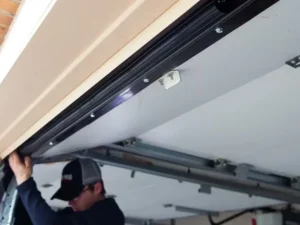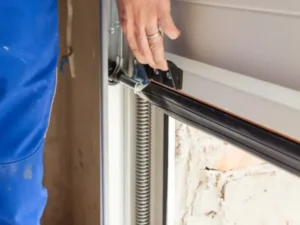Introduction
A properly sealed garage door is essential for maintaining a clean, energy-efficient, and weatherproof garage. In this guide, we’ll explore the different types of garage door seals, their benefits, and how to select the right one for your needs.
What Is a Garage Door Seal?
A garage door seal is a protective barrier installed around the garage door to prevent air, water, dust, insects, and debris from entering. It improves insulation, enhances energy efficiency, and protects your garage from external damage.

Common materials for garage door seals include:
- Rubber: Flexible and durable, ideal for bottom seals.
- Vinyl: Good weather resistance, easy to install.
- EPDM: Excellent for extreme weather conditions.
- Neoprene: Oil-resistant and durable.
- Others: PVC, foam, aluminum, steel, and brush materials.
Benefits of Using Garage Door Seals
- Improves energy efficiency by stabilizing indoor temperatures.
- Protects against rain, snow, wind, and dust.
- Blocks insects, rodents, and pests.
- Reduces outdoor noise.
- Prevents debris accumulation inside the garage.
Types of Garage Door Seals
Understanding the different types helps you choose the best fit for your garage door:

1. Garage Door Bottom Seal
Installed at the bottom of the garage door to block air, water, dust, and insects. Common types include:
- Bulb Seal: Bulb-shaped, compresses easily for tight sealing.
- Beaded Seal: Beaded edges fit into track grooves for secure sealing.
- J-Type Seal: Shaped like a “J”, ideal for uneven floors.
- T-Type Seal: T-shaped, slides into a track for sectional doors.
2. Garage Threshold Seal
Installed directly on the floor. Creates a barrier even if the garage floor is uneven.
3. Brush Seal
Made of flexible nylon or polypropylene brushes. Excellent for sealing gaps on uneven floors.
4. Doorstop Weatherstripping
Mounted along the sides and top of the doorframe, ensuring a tight closure.
5. Panel Weatherstripping
Seals gaps between garage door panels to improve insulation and protection.
6. Reverse Angle Seal
Attached to the frame instead of the door, providing extra sealing around the perimeter.
How to Properly Seal a Garage Door
Follow these steps for optimal sealing performance:

1. Assessment & Preparation
- Inspect existing seals for wear or damage.
- Measure the door dimensions accurately.
2. Removal
Carefully remove old seals without damaging the door.
3. Installation
- Choose the correct type and material based on your needs.
- Install following the manufacturer’s instructions.
4. Final Adjustment
Trim excess material if needed, adjust for full contact.
5. Maintenance
Clean regularly and replace when worn to maintain performance.
FAQ
Q: How do I know what garage door bottom seal I need?
A: Consider your garage door type (metal, wood, sectional), local climate, and the material’s flexibility and durability.
Q: How do I know if my garage door seal needs replacing?
Signs include visible cracks, brittleness, water leaks, drafts, or increased noise.
Q: Are there different sizes of garage door seals?
A: Yes, most seals come in standard sizes but can be trimmed or customized to fit various door widths and heights.
